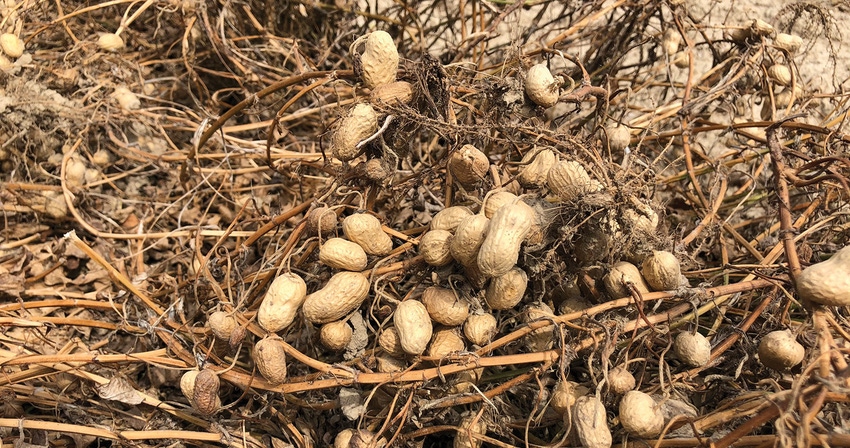
In 2021, U.S. peanut growers delivered one of their best crops in decades. The U.S. peanut market needed it and is now in good balance. But the growing market still needs peanut acres in 2022, and it will have to compete for them.
“The ’21 crop by all accounts has come in with good quality, yields and production overall. Now considering demand, you could say we’re at an equilibrium point in some respects with the market, where we haven’t been in some years,” said Adam Rabinowitz, University of Auburn agricultural economist, in early January.
Rabinowitz provided peanut outlook information at some meetings for Delta growers late last year.
According to USDA estimates released Jan. 12, U.S peanut farmers harvested 1.54 million acres in 2021 with an estimated total production of 3.19 million tons. The 2021 production will be roughly 100,000 tons more than 2020. (Brent Murphree)
U.S peanut farmers harvested 1.54 million acres in 2021 with an estimated total production of 3.19 million tons, according to USDA estimates released on Jan. 21.
Peanut production
The 2021 production will be roughly 100,000 tons more than 2020.
Industry wide, it was clear the 2021 crop came in excellent on quality, some calling it the best in decades with little to no aflatoxin issues, which plagued the industry in 2019.
Record high yields were estimated in Oklahoma (4,400 pounds per acre), South Carolina (4,200 pounds) and Virginia (4,700 pounds), but average yields were strong across the Peanut Belt. The average yield for the country was expected to be 4,135, or only 76 pounds shy of the country’s record yield set in 2012.
Arkansas growers were expected to average 5,000 pounds per acre, 300 pounds shy of record yield set in 2017. Mississippi growers expected to average 4,200 pounds per acre, 200 pounds shy of the record yield set in 2012.
In Georgia, the country’s leading peanut producer, growers expected to average 4,450 pounds per acre, or 130 pounds shy of the state’s record set in 2012.
He said few if any contracts for ’22 production have been offered, but considering the prices for cotton, corn and soybeans are higher, peanut contracts will have to compete for acres. “But we will likely see peanut contracts at least at the level of ’21 if not with an uptick to compete for those acres, and $500 per ton would be likely at least on part of a grower’s production,” he said.
Higher expenses
Input costs are up across the board, not just for fertilizer. Most crop protection products are and will be more expensive in 2022.
“Growers, whether peanut or otherwise, must continue to pay careful attention to cost of production. Even though the (crop) price is there to support increasing input prices, margins don't look as bad as they might have two years ago with the same increase in inputs,” he said.
He cautioned that these higher crop prices, though welcomed, is a spike, or a blip, and will not stick around. The last time U.S. growers saw a similar across-the-board increase in commodity prices, it was followed by a dramatic drop and lull in prices. “This current price environment is not the norm,” he said.
U.S. peanut exports have fallen from previous years’ highs, due in part to less purchases from China over the last year, he said, along with troubled trade issues with the EU and the on-going logistical shipping issues. But industry-wide efforts to grow peanut demand continued to pay dividends, especially during the pandemic. Last year, per capita consumption in the U.S. reached 7.9 pounds, an all- time record.
He also said the dynamics of the peanut market have changed much since the end of the quota system two decades ago. The “Peanut Belt” has expanded. More peanuts are now grown in the Delta region and in region’s that were not traditionally peanut-heavy. Also, grower-owned shelling facilities, including a new one in southwest Alabama, have shifted growers’ abilities to market their peanuts differently.
He said a wise grower won’t base long-term financial decision on crop prices this year. “For example, if you're going to think about buying new equipment or investing in some improvements on the farm, you’re going to think about what that means long term and make consideration knowing prices will fall back down again,” he said.
About the Author(s)
You May Also Like






